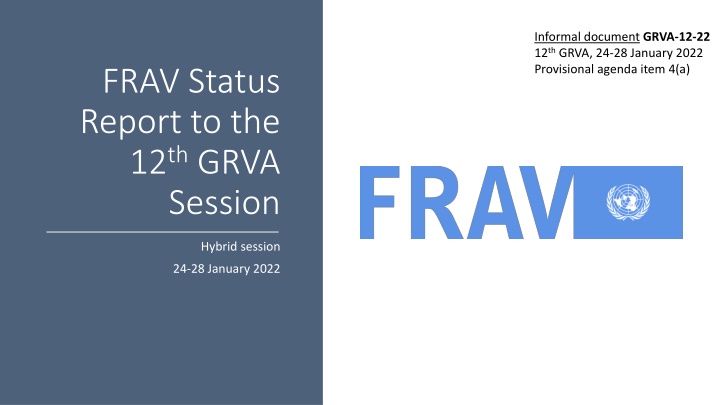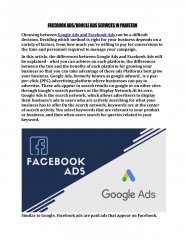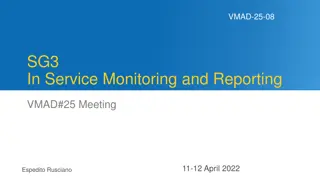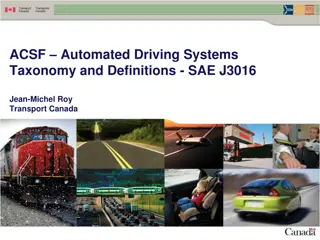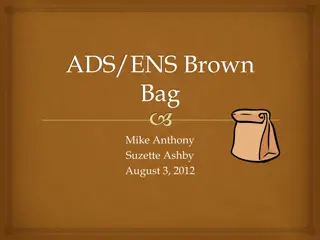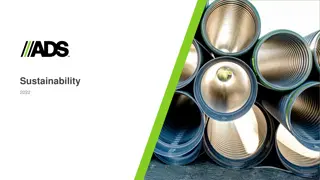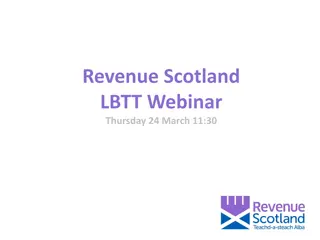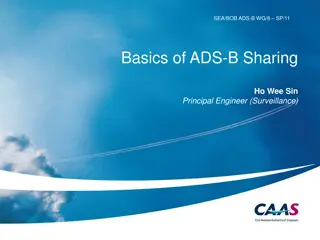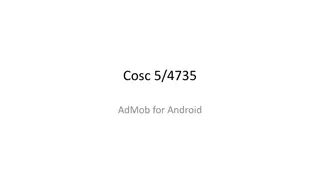Update on ADS Safety Guidelines and Recommendations
Presentation of the current status of drafting safety recommendations for Automated Driving Systems (ADS) at the 12th GRVA Session. The document outlines the framework, diversity, and specific safety requirements for various types of ADS. It highlights the progress made in establishing measurable safety specifications and the ongoing work on detailed safety provisions. Key topics include manufacturer descriptions, safety considerations, and the alignment with existing FRAV frameworks.
Download Presentation

Please find below an Image/Link to download the presentation.
The content on the website is provided AS IS for your information and personal use only. It may not be sold, licensed, or shared on other websites without obtaining consent from the author.If you encounter any issues during the download, it is possible that the publisher has removed the file from their server.
You are allowed to download the files provided on this website for personal or commercial use, subject to the condition that they are used lawfully. All files are the property of their respective owners.
The content on the website is provided AS IS for your information and personal use only. It may not be sold, licensed, or shared on other websites without obtaining consent from the author.
E N D
Presentation Transcript
Informal document GRVA-12-22 12th GRVA, 24-28 January 2022 Provisional agenda item 4(a) FRAV Status Report to the 12thGRVA Session Hybrid session 24-28 January 2022
Draft Recommendations Submitted draft guidelines and recommendations on ADS safety (GRVA-12-23). Document presents current state of work on drafting safety recommendations. FRAV will continue to elaborate text towards providing measurable/verifiable specifications. Document has four sections: 1. Document purpose (record work in progress) 2. Terms and definitions 3. Guidelines for manufacturer descriptions of ADS and features 4. ADS safety recommendations, including table reflecting ongoing discussions on detailed provisions Slide 2
ADS Safety Framework Document aligns with FRAV framework presented previously. ADS have diverse configurations, intended uses, and limitations on use. Clear information on each ADS is needed to determine safety requirements specific to the ADS. FRAV guidelines on manufacturer descriptions address this need. Safety specifications intended to enable determinations on their application based on description of the ADS. Slide 3
ADS diversity: Generic illustration Case A Case B ADS is designed to be driven manually until reaching a motorway after which the driver may activate the ADS. The ADS will transition control back to the driver before exiting the motorway. Use of the ADS is limited to a maximum speed of 90 kph and can operate in rain up to a rate of 0.5 cm/hour. Dual-mode ADS vehicle designed either for manual or ADS operation. ADS not designed to transition control while vehicle is in motion. Intended use as shuttle following defined routes such as city centers, campuses, airports, etc. ADS speed limited to 30 kph. ADS use limited to fair weather. Relative safety considerations Relative safety considerations Activation only on motorways Performance under motorway conditions TOC interactions, execution, verification Fallback responses relative to ODD exits Performance in rain per design TOC provisions not applicable (no activation while vehicle in motion) Designated route conditions, restrictions No activation in inclement weather No violation of ODD boundaries Slide 4
FRAV current status Diversity of ADS and ODD 142 safety proposals Five Starting Points List of Safety Topics Safety topics review Tasks/Objectives Common Understanding Safety Needs General Requirements Specifications ADS descriptions Package Delivery Agreed on general requirements for ADS safety Open issues remain that will be resolved during development of more detailed provisions. Table 1 provides information on elaboration of more detailed provisions for safety specifications. Agreement on detailed provisions to provide basis for defining measurable/verifiable criteria. Working on safety specifications and ADS description elements in parallel Slide 5
Working document open issues Document open to change with items for further consideration. Inclusion of ODD in ADS definition (2.1.) ADS determination that driver qualified (2.5.) Differentiation of dynamic control and DDT (2.6., 2.7.) Clarification of ORU (2.7.2.1.2.) Consideration on animals (2.7.2.1.2.) Clarify perception in vehicle path versus in vehicle environment (2.7.2.1.2.) ADS conspicuity functions and relevance of gesturing (2.7.2.3.4.) Fallback user: Fallback-ready user under SAE/ISO MRC: Consideration of SAE/ISO definition ODD: Inclusion of illustrative examples under definition Clarification of operational and tactical function definition per literature (2.12., 2.17.) Transition of control: Attention to verification of driver control by completion (2.18., 4.2.5.) Further consideration of ADS user definition (2.19.) ODD elements to be expanded and to be measurable/verifiable (3.3.) Consider roles of traffic laws in defining readiness obligations of fallback users (3.4.3.1.) Clarify manufacturer obligations in describing user roles and responsibilities (3.4.3.1.) Clarify targets of user HMI information (3.4.3.5.) Clarify addressable misuse and error foreseen by 4.2.3. Address steps in transitions of control, including verification that user has assumed driver role/control of vehicle (4.2.5.) Clarify intended recipients of information and tools for understanding ADS functionality and operation (4.2.7.) Clarify 4.3.3. regarding ADS response to accident/collision. Unauthorized modifications: consider tampering and unintentional/inadvertent (4.4.4.) Clarify permission for continued operation in presence of fault/failure (4.4.5.) Reconsider scope of maintenance addressable outside FRAV? (4.5.) Slide 6
Areas of activity FRAV workstreams ADS performance of DDT Nominal driving Safety-critical situations ADS interactions with users User roles/responsibilities User information and awareness Activation/deactivation/TOC safety Other road users (ORU) Detectable properties-based approach OEDR detection, recognition, classification ADS responsiveness to safety needs (DDT) Data collection for ADS VMAD synergy Traffic scenarios Interactions between DDT performance and parameters of traffic scenarios. Audit Complementarity between ADS descriptions and Audit documentation. Test methods Above impacts selection and parameterization of test methods. In-Service Monitoring/Reporting Synergy among data collection (EDR/DSSAD), safety specifications, and reporting metrics. Slide 7
Expectations Elaborate detailed provisions derived from the current safety recommendations. Build out OEDR framework based on detectable properties approach Build out DDT performance specifications taking into account VMAD scenario-based assessment methods and OEDR framework (to extent applicable) Build out vehicle-user safety specifications based on user roles/responsibilities and nature of user interactions with ADS based on ADS configurations, intended uses, and limitations on use Further elaboration of failure management specifications and scope of maintenance over vehicle lifetime Collaboration with VMAD and EDR/DSSAD on areas of mutual interest and/or interdependence Slide 8
Thank you for your attention. FRAV welcomes questions, comments, or suggestions. Slide 9
